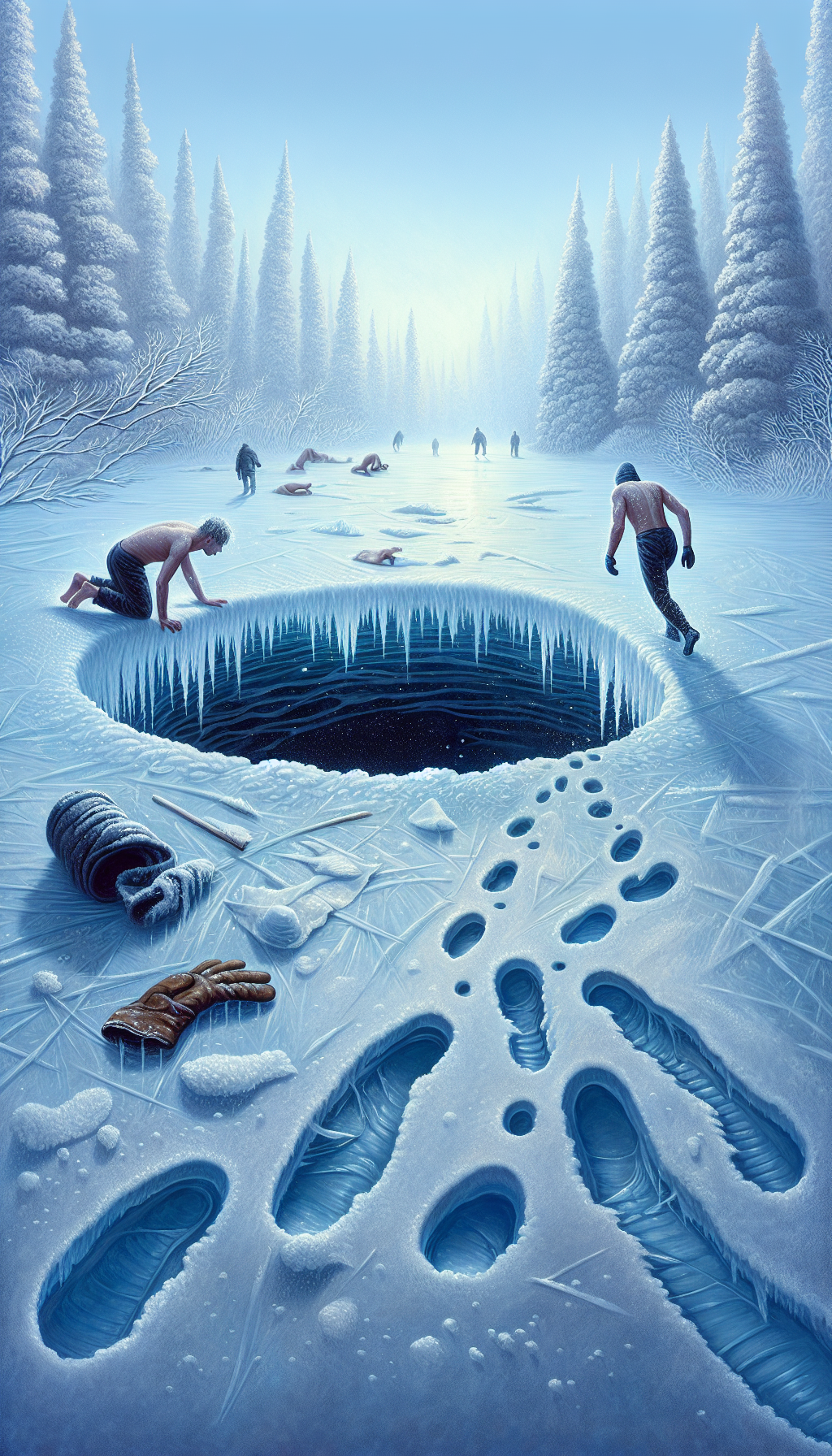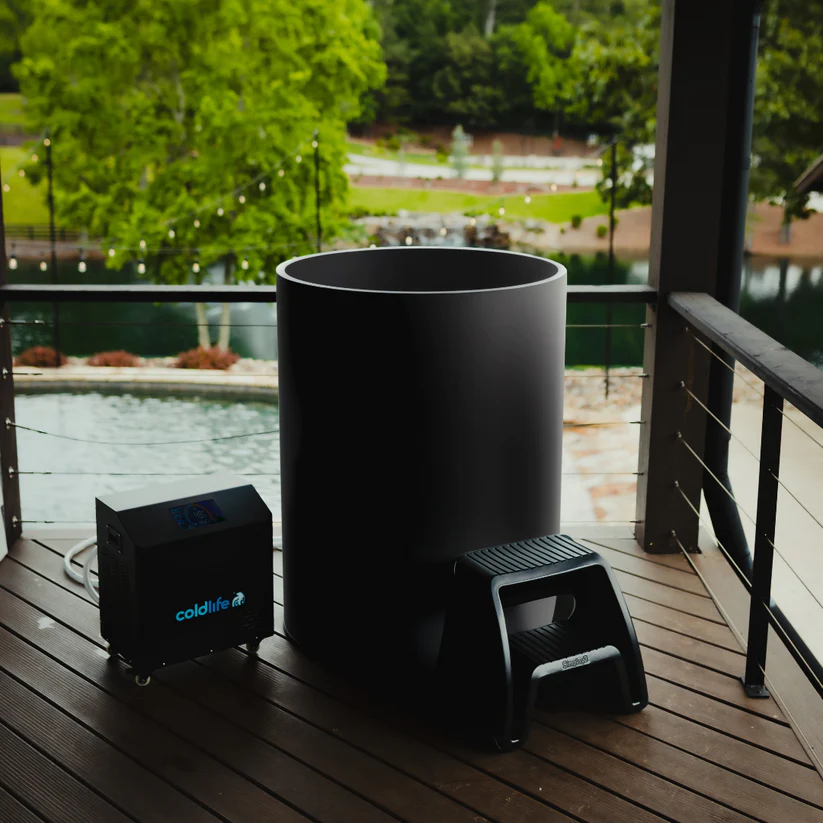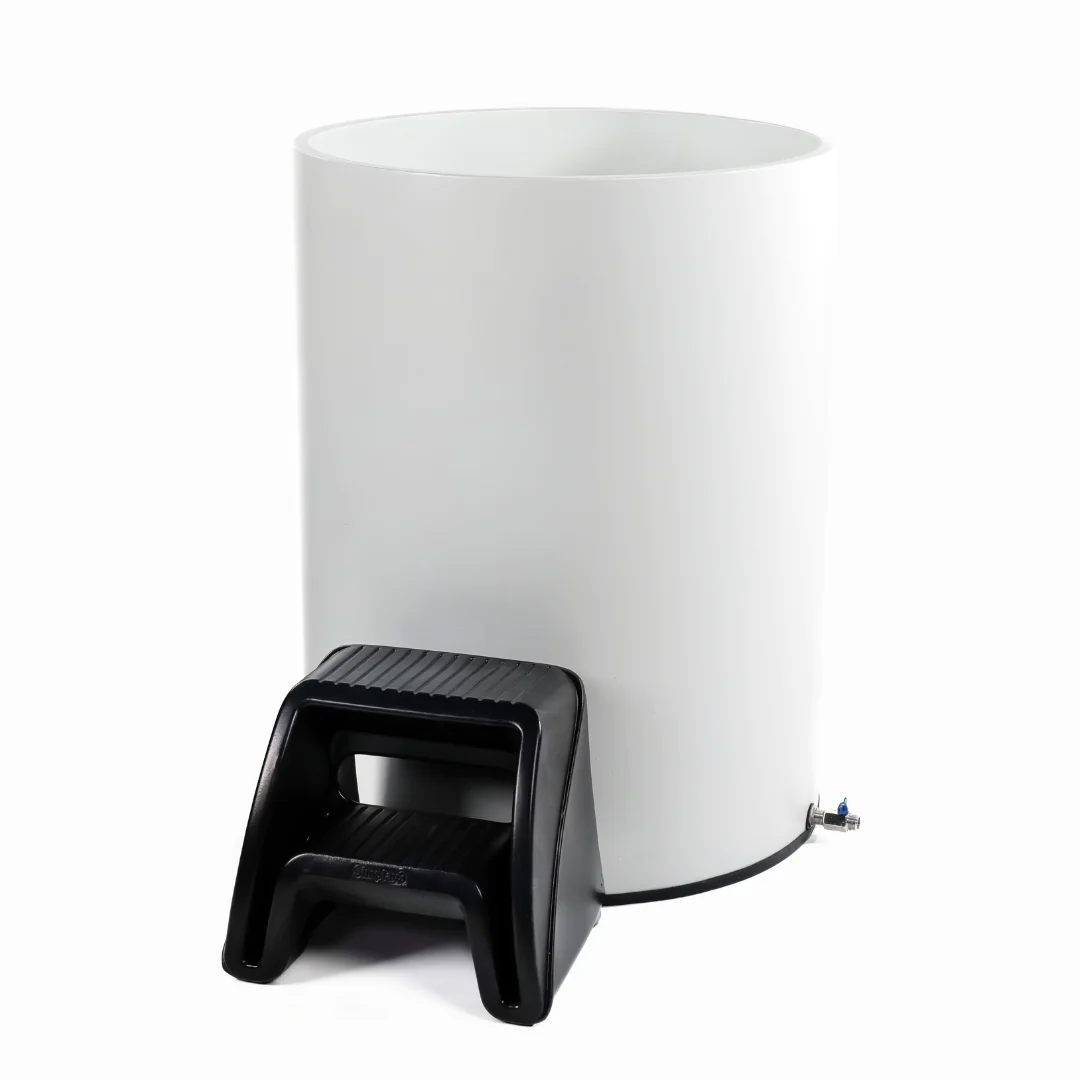Key Takeaways – When is a Cold Plunge too cold
Takeaway 1:
So, you’re thinking of trying out a cold plunge or ice bath, huh? Well, the first thing you need to know is that the ideal temperature range for this icy adventure is between 50°F and 60°F (10°C and 15°C). Anything lower may cause trouble, while anything higher might not give you the full benefits. So, stick to these chilly digits for maximum effectiveness.Takeaway 2:
Now, here’s something important to keep in mind – we all have different tolerance levels when it comes to cold water. That’s why it’s crucial to start at a temperature that you can comfortably handle and then gradually decrease it over time. Aim for that sweet spot between 50°F and 60°F (10°C and 15°C), but remember, some experts suggest that the benefits might not increase after around 40 degrees Fahrenheit. So, listen to your body and find what works best for you.Takeaway 3:
Okay, let’s get real for a moment. Plunging into freezing water might sound invigorating, but it can also trigger something called cold shock if the temperature drops suddenly. This can lead to gasping for air like a fish out of water (literally!), rapid breathing, spikes in heart rate and blood pressure, and even clouded thinking. Yikes! So please be cautious and avoid going below around 50°F (10°C) unless you have professional guidance or supervision – safety first! In conclusion: Stick with temperatures in the range of 50°F – 60°F (10°C -15°C), but start with what feels comfortable before gradually cooling things down. Always pay attention to how your body reacts during your chilly sessions and never push yourself beyond what feels safe or cozy without seeking expert advice. Stay cool!Our #1 Best Recommended Cold Plunge
1. For all your cold-weather adventure needs, check out our The Cold Life collection. 2. Don’t let the freezing temperatures hinder your outdoor activities when you can gear yourself up with apparel and accessories from The Cold Life. 3. Whether it’s snowboarding or a simple winter walk, make it enjoyable and comfortable with equipment available at The Cold Life.Are you ready to redefine your limits with cold immersion?
Explore the compelling truth behind cold plunging and its remarkable benefits for mind and body.
Dive into the Cold Life Plunge Bundle now to embark on your journey to revitalization and strength. Transform your life today!
Here’s a Youtube Video about When is a Cold Plunge too cold
The practice of cold plunging can offer various health benefits, but a question often arises: when is a cold plunge too cold?
Generally, the ideal temperature for a cold plunge ranges from 50 to 59 degrees Fahrenheit. This temperature range offers benefits such as increased circulation and boosted immunity. However, it’s critical to be aware of potential dangers like cold shock, which may occur if the temperature is too low or if you stay submerged for an extended period.
If you’re new to this practice, starting with shorter durations and gradually lower temperatures can help ease your body into the routine. It’s necessary to know that extreme exposure to cold can lead to risks like hypothermia.
Above all, personal comfort levels should guide your decisions about cold plunging. Consider seeking professional guidance to gain a better understanding of your body’s response and adapt accordingly.

Understanding Cold Plunge: A Basic Overview
Most of you have probably heard about the cold plunge therapy, but do you really know what it entails? Well, I’m here to enlighten you. A typical session involves submerging most of your body in cold water for as little as one minute upwards. The water is ideally between 50-60 degrees Fahrenheit (10-15 degrees Celsius) – anything lower could potentially cause harm, while higher temperatures may not deliver the anticipated cold plunge benefits.
By the way, this technique is an age-old ritual often used for body and mind stimulation or post-workout recovery.
The Ideal Temperature for a Cold Plunge and Its Benefits
The ideal cold plunge temperature target usually lies between 50-60 degrees Fahrenheit (10-15 degrees Celsius), though some sources suggest the benefits max out at around 40 degrees Fahrenheit.
Now that I think about it, individual tolerance levels can vary widely. It’s generally advised to start with a temperature you can comfortably tolerate before gradually lowering it over time.
Remember: Safety first!

Download this courtesy guide to optimize your sauna and cold plunge experience and health optimization.
Download the Free Guide TodayRecognizing the Dangers of Cold Shock from Cold Plunging
In any case, rapid immersion in waters colder than 50-60°F can trigger what we call “cold shock”. This state might lead to involuntary gasping, a spike in heart rate and blood pressure, rapid breathing, and impaired cognitive functions such as clouded thinking and decision-making.
So, while the benefits of cold plunges can be significant, it’s clear there are also some risks to bear in mind.
Guidelines to Start with a Cold Plunge: Duration and Temperature
All things considered, if you’re considering an ice bath or cold plunge for recovery or therapy, start off by limiting your sessions to around five minutes. This will help ensure you can tolerate it well before gradually increasing the duration.
It’s also essential to consider the optimal temperature for cold plunge sessions – typically between 50-60°F (10-15°C).
Identifying the Risks associated with Extreme Cold Exposure during a Cold Plunge
You see, while we have been discussing about cold plunges and their benefits, it’s equally critical to acknowledge potential risks associated with extreme cold exposure. Some of these hazards include frostbite, hypothermia and other injuries.
Hence, exposure below approximately 50°F (10°C) should generally be avoided unless under professional guidance.
Personal Comfort Levels and Professional Guidance When Undertaking a Cold Plunge
When embarking on your journey of cold water immersion therapy or what some might term as ‘polar bear dives’, remember that personal comfort levels should always guide your initial settings before gradually working towards cooler temperatures. Never push beyond what feels safe or comfortable without seeking professional advice.
The risk of hypothermia in cold water immersion is real!

When engaging in a cold plunge, it’s crucial to know how cold is too cold for polar plunge. Cold plunges have numerous benefits, but they can be dangerous if not performed correctly. To avoid potential risks associated with extreme temperatures, you might want to check out guidelines regarding what temperature is too cold for a cold plunge.
Is a 10-minute cold plunge too long? The duration of your plunge and the temperature of the water are both important facets to consider. While some may push their limits with colder temperatures or longer durations, it’s always wise to stay within safe guidelines. You can refer to our post on whether a 10-minute cold plunge is too long for detailed insights.
If you’re wondering about the effects of transitioning from hot environments to cold ones, our post on what happens when you go from sauna to cold plunge, provides in-depth information on this practice.
Certain conditions may require extra precautions when it comes to undertaking a chilly dip. For instance, if you are pregnant or breastfeeding can you undertake a cold plunge while breastfeeding?, Are there specific concerns that need addressing? It’s always best to be informed and take necessary precautions for safety.
The aftermath of your ice bath is just as important. What to do after you cold plunge has been elaborated in one of our posts which talks about how to maximize the benefits and recovery after a polar dunk.
My Personal Take about When is a Cold Plunge too cold
Hi there, it’s me, George, your trusted friend when it comes to all things saunas and cold plunges. Now that I think about it, have you ever wondered “when is a cold plunge too cold?”
In any case, let me shed some light on understanding the right temperature for your health and safety. You see, a cold plunge shouldn’t feel painfully freezing – ideally somewhere between 50-59°F (10-15°C).
- The immersion in such temperatures can stimulate blood flow,
- Promote muscle healing,
- And even boost your mood considerably.
Words of Advice: Always listen to your body and gradually adapt to the chill for a better experience. With time and practice, you’ll grow to love this invigorating routine as I do. Here’s hoping that this insight kindles an interest or even a burning desire in you to try out saunas and cold plunges – they truly are the perfect blend of wellness and rejuvenation!
Our #1 Best Recommended Cold Plunge for most People
Cold plunge therapy offers a myriad of health benefits, but it’s crucial to keep safety in mind. It’s essential to understand the appropriate temperature for a cold plunge, which you can learn more about at The Cold Life . Too extreme temperatures can risk your health and safety, so be sure to keep informed and enjoy cold plunging responsibly.Discover the unparalleled benefits of cold immersion with ColdLife Plunge 1. Unleash your full potential with our innovative cold plunging solution. Explore the transformative effects on your body and mind. Elevate your lifestyle with ColdLife Plunge 1 today!
Frequently Asked Questions about When is a Cold Plunge too cold
1. Is there a specific temperature range for a cold plunge?
Yes, the ideal temperature range for a cold plunge is typically between 50°F – 60°F (10°C – 15°C).
2. Can lower temperatures in a cold plunge be harmful?
Yes, temperatures lower than 50 to 60 degrees Fahrenheit can cause what’s called cold shock, leading to gasping, rapid breathing, and impaired cognitive function.
3. Should I gradually decrease the temperature when starting a cold plunge?
Absolutely! It’s recommended to start with a comfortable temperature and gradually decrease it over time until reaching the desired target range.
4. How long should each session of a cold plunge last?
If you’re new to this therapy, it’s best to limit your sessions to around five minutes initially just to ensure you can tolerate it well.
5. Are there any risks associated with extreme cold exposure during a cold plunge?
Absolutely! Risks such as frostbite, hypothermia, and other injuries are possible if exposed below approximately 50°F (10°C), unless under professional guidance or supervision.
6. Should personal comfort levels dictate the initial settings for a cold plunge?
Definitely! Always prioritize your own comfort levels when starting out by choosing an initial temperature that feels safe and comfortable before gradually working towards cooler temperatures.
Now you know When is a Cold Plunge too cold , but that’s only the beginning of your journey here at Sweat N Chill Zone. If you found this post useful there’s more to learn to get you to the next step of your sauna & cold plunge journey. If you read our next articles you’ll be a step further than most people.
Before you go…
Takeaway 1:
So, you’re thinking of trying out a cold plunge or ice bath, huh? Well, the first thing you need to know is that the ideal temperature range for this icy adventure is between 50°F and 60°F (10°C and 15°C). Anything lower may cause trouble, while anything higher might not give you the full benefits. So, stick to these chilly digits for maximum effectiveness.Takeaway 2:
Now, here’s something important to keep in mind – we all have different tolerance levels when it comes to cold water. That’s why it’s crucial to start at a temperature that you can comfortably handle and then gradually decrease it over time. Aim for that sweet spot between 50°F and 60°F (10°C and 15°C), but remember, some experts suggest that the benefits might not increase after around 40 degrees Fahrenheit. So, listen to your body and find what works best for you.Takeaway 3:
Okay, let’s get real for a moment. Plunging into freezing water might sound invigorating, but it can also trigger something called cold shock if the temperature drops suddenly. This can lead to gasping for air like a fish out of water (literally!), rapid breathing, spikes in heart rate and blood pressure, and even clouded thinking. Yikes! So please be cautious and avoid going below around 50°F (10°C) unless you have professional guidance or supervision – safety first! In conclusion: Stick with temperatures in the range of 50°F – 60°F (10°C -15°C), but start with what feels comfortable before gradually cooling things down. Always pay attention to how your body reacts during your chilly sessions and never push yourself beyond what feels safe or cozy without seeking expert advice. Stay cool! If you’re curious about cold water plunging, first understand how cold is too cold for a cold water plunge. Once you’ve got the basics, learn about what happens when you take a cold plunge, and discover the best way to approach this practice. Finally, we can guide you to the most affordable options for your own cold plunge setup.George From Sweat N Chill Zone
George, the passionate founder of Sweat N Chill Zone, is an ardent advocate for holistic wellness through the healing powers of saunas and cold plunges. With a background in health sciences and a fervent dedication to sharing the benefits of thermal therapy, George curates an informative space, offering insights, tips, and expert advice to help individuals optimize their health and well-being through the transformative effects of heat and cold treatments. Through Sweat N Chill Zone, George aims to inspire and educate, fostering a community centered around rejuvenation and vitality.
Download this courtesy guide to optimize your sauna and cold plunge experience and health optimization.
Download the Free Guide Today



